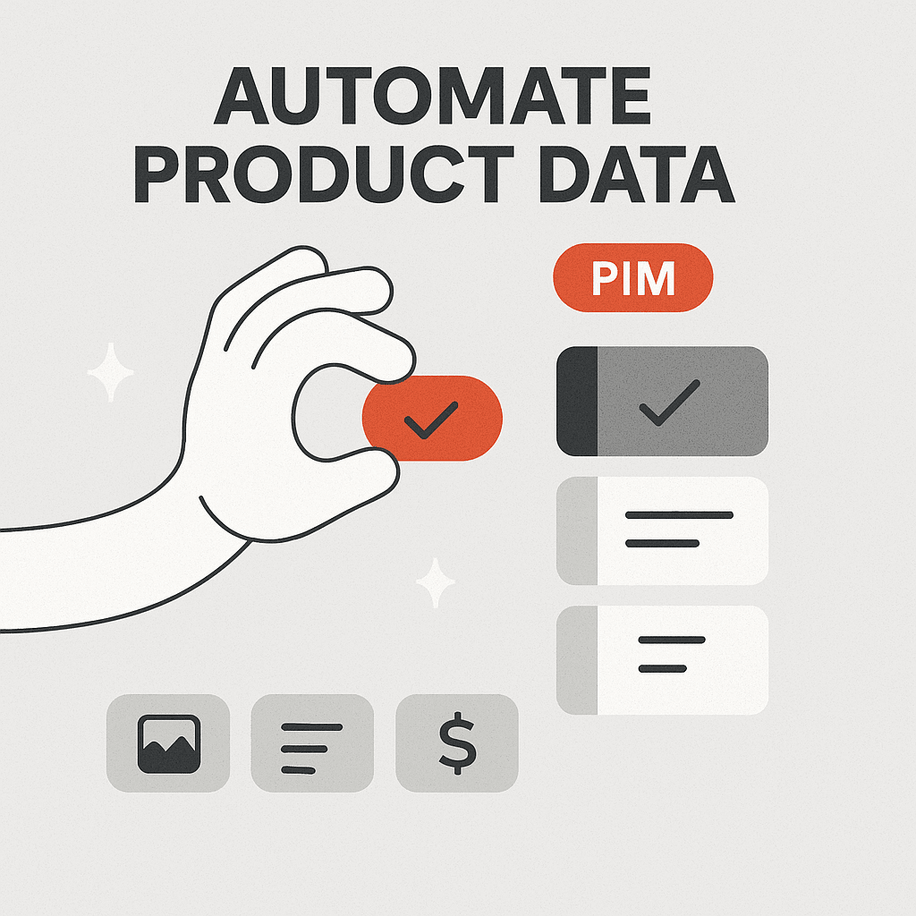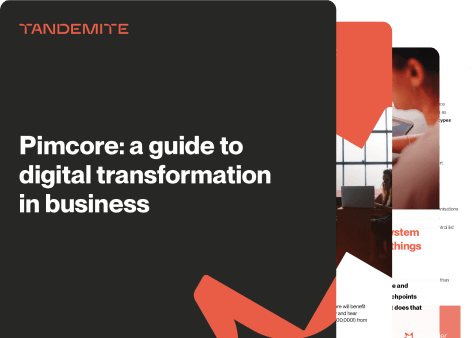More products, more channels, more markets: Why B2B needs Akeneo to scale

When your B2B catalog grows from hundreds to tens of thousands of items, product information stops being “content” and becomes infrastructure. If that infrastructure is a patchwork of spreadsheets, ERP fields, marketplace templates, and inboxes… every step of growth hurts.
Scaling up opens new opportunities, but it often comes with a side effect: product information chaos. You might be introducing new product lines, selling on multiple e-commerce sites or marketplaces, and catering to different countries or client-specific catalogs. The complexity of managing product information grows exponentially.
In this post, we’ll address how Akeneo PIM answers the specific challenges of scaling in B2B (which are very different from B2C), how it fits into your ecosystem, and how to know it’s working.
What B2B product teams actually struggle with (beyond “inconsistent information”)
Typical pain points and scaling traps we see:
1. Deep technical attributes and standards: Materials, tolerances, certificates (CE, REACH, RoHS), IP ratings, pressure classes, safety sheets. Attributes change by region and standard.
For B2B buyers – who often rely on detailed technical specs – missing these pieces of product information can be a deal-breaker.
2. Complex product structures: Variants, configurable products, kits, replacement and spare parts, successor/predecessor relationships, “compatible with”/fitment (machines, vehicles).
3. Units and conversions: Metric/imperial, pack sizes, minimum order quantities, pallet logic, hazardous goods flags.
4. Customer- and channel-specific views: Distributors need different attribute sets than marketplaces; print catalogs differ from eCommerce. Each channel may also require data in a different format.
It’s easy to see how, without the right tools, expanding to just a couple of new channels can overwhelm your team. Teams end up manually reformatting and rephrasing product data for each outlet.
5. Supplier onboarding at scale: Inputs arrive as Excel, CSV, PDFs, or via APIs – each with different naming, units, and completeness.
6. Localization beyond language: Market entry is not solved by translation alone. It requires aligning with compliance fields, adjusting tone of voice, converting measurement units, and respecting claim restrictions.
7. Governance and accountability: Who owns which field? Who approves a change? What changed last week – and why?
8. Cross-system friction: Spreadsheets and files store some product details, ERP/PLM manage another portion, while eCommerce platforms keep the rest.
Different departments may maintain their own versions. No one trusts which version is “final.” This fragmentation means no single source of truth.
9. Manual everything: Bulk updates take days. If adding a new product or updating information means touching every single channel’s database or waiting on spreadsheet updates from multiple teams, your time-to-market suffers.
Manual updates on dozens of platforms also increase the chance of something being overlooked. This challenge grows with scale – what worked with 100 products breaks down with 10,000. You duplicate work and still miss details.
A PIM should turn these into predictable processes.
Important! The first and most important step in taming the complexity of a growing product catalog is centralizing your product information.

How Akeneo PIM addresses core B2B scaling needs
1. Rich product modeling that fits B2B complexity
Your products, your structure.
Every business is unique – especially in B2B, where product catalogs can be highly specialized and technical. One company might need to manage detailed specifications for industrial components, while another deals with complex bundles or configurable products.
In Akeneo, when your assortment doubles, or you add a new region, you extend the model and rules rather than rebuilding pipelines.
a) Families (product templates) and attribute groups let you capture the nuances of your assortment and define exactly which fields each product type requires (e.g., pumps vs. seals). The taxonomy is extensible.
b) Product variants manage configurable items cleanly, without duplicating effort: e.g., all sizes or versions of a product under one umbrella.
It makes internal management easier.
c) Reference entities and associations handle specific relationships. In B2B, the value lies not only in individual products but in how they connect. MDMs and ERPs try, but usually struggle to model these ties – accessories, compatible spare parts, multi-piece kits, or cross-sell links.
A PIM solution does it natively, which is why product data should live there. You can explore more about why PIM is indispensable and where other platforms fail.
Associations can be reused across the catalog, powering compatibility, easier B2B product discovery, and dependable after-sales support.
d) Market-specific attributes (e.g., ATEX class for EU, UL for US, REACH/RoHS fields).
You get:
- future-proofing for new categories,
- less duplication,
- easier enrichment by the right teams,
- confidence to add products,
- fewer mistakes,
- a structured, repeatable product-data workflow that systematizes who does what and when – improving the way the organization operates.
2. Orchestrated enrichment and rules for data hygiene at scale
a) Completeness rules define what “ready to publish” means. Akeneo calculates completeness per channel and locale (what’s missing for “eCommerce DE” may be fine for “Distributor FR”).
b) Data quality insights surface gaps (spelling, length, stop words), so teams work where impact is highest.
You get:
- reduced channel rejections,
- less spec corrections post-launch,
- clear priorities for editors,
- predictable time-to-market,
- higher content completeness per destination.
3. Built-in localization for real internationalization
a) Measurement families normalize units (metric/imperial). Akeneo stores canonical values with auto-conversion for channels.
b) Country assortments (what’s sellable where) and regional documentation.
c) Export packs and connectors to your language service provider streamline the translation process.
d) Market-specific compliance fields.
You get:
- multi-market rollouts,
- side-by-side translations,
- consistent product experience worldwide,
- easier compliance (labels, warnings, certifications).
4. Associations and lifecycle relationships
a) Associations express kits, spare parts, replacements, cross-sells, “works with”, and successor/predecessor chains.
b) Status and lifecycle fields make “end of life”/”end of support” visible, with recommended alternatives.
You get:
- cross-sell & up-sell opportunities,
- linked product visibility,
- better customer experience (buyers get accurate, structured information about alternatives, bundles, and compatible items).
5. Supplier onboarding and automation
a) Rules engine can auto-fill attributes, set categories, or raise flags based on conditions.
b) Mass imports via files or API, bulk edit, and validations standardize incoming data. They let a small team manage a huge catalog.
For example, if you need to update the material attribute for 5,000 products, it’s a few clicks with Akeneo’s mass update – as opposed to opening 5,000 records one by one.
You can schedule regular heavy imports from other systems, and PIM Akeneo will process them systematically.
c) Optional apps/connectors can plug in DAM, or supplier portals.
You get:
- less custom scripting,
- fewer manual touches,
- fewer unit errors on partner feeds,
- quick updates.
6. Multi-channel by design
One hub, many destinations.
a) Tailored exports for your e-commerce, marketplaces, partner portals, print, PLM/ERP, and CPQ, each with its own completeness and transformation rules.
You don’t have to feed each system manually; Akeneo can syndicate the data, whether you’re adding a direct online store, sending data to distributors, or trying out a new industry portal.
In a full IT ecosystem, Akeneo ensures processes run on accurate, enriched product data. It functions as the central hub, exchanging data across your infrastructure.
b) Channel-specific titles, bullets, imagery sets, attribute visibility, and documentation. You can schedule pushes, track publish status, and keep all destinations aligned.
You get:
- repeatable exports,
- faster channel onboarding,
- fewer inconsistencies between sites.
7. Governed updates
From “Who owns this field?” to “We have a process.”
a) Granular permissions by role, locale, or attribute group.
At scale, it’s not just about speed, but also about maintaining control.
As your team of users grows (maybe you have dozens of people editing product data, including external partners or freelancers), you can control who can do what.
b) Proposals/approvals for changes create a trackable review process: business users enrich | reviewers approve | audit trails track changes.
Versioning/audit trail is crucial for large organizations to maintain data integrity. Even if thousands of edits are happening, nothing is lost or untraceable.
You get:
- auditability and compliance,
- clear ownership and history of changes,
- trust in the data,
- less back-and-forth between teams,
- safer product launches.
Companies that invest in optimizing their product details see concrete improvements. It’s about working smarter, not harder, and giving your teams and customers the information clarity they need. Our role at Tandemite is to systematize product-related data and develop the ecosystem to support it.
Common pitfalls (and how we steer around them)
- Treating PIM software like a file share. We set clear ownership and workflows.
- Overloading PIM with ERP logic. Keep operational data in ERP; PIM enriches and distributes.
- Skipping taxonomy design. We co-create a model that mirrors how you sell and support products.
- “Big bang” rollouts. Iterative releases build confidence and institutional knowledge.
Where Akeneo fits in your ecosystem
- Upstream: ERP/PLM/MES provide identifiers, lifecycle, list prices.
- PIM (Akeneo): Enrichment, taxonomy, translations, assets, channel readiness, and governance.
- Downstream: eCommerce, marketplaces, distributor portals, print/BI/CPQ consume product data tailored by channel.
PIM Akeneo is engineered to support industrial-scale catalogs. We have seen clients grow their assortment significantly without any degradation in how they manage data day-to-day. The user interface remains responsive, and the import/export processes and validations remain robust even as the database grows.
Example 1: Industrial components
❌ Before: Each region keeps its own Excel with attributes, units, and norms; distributors request monthly CSVs; PDFs live in folders.
✅ After Akeneo: One global schema; EU SKUs expose CE declaration; US SKUs expose UL/ANSI standards; SDS and drawings linked to the product; distributor feeds auto-generated weekly; the web shop pulls the same trusted data daily.
Example 2: Chemicals / consumables
❌ Before: Launch stalls while compliance and translations chase lathe test changes; SDS versions differ between website and partner portal.
✅ After Akeneo: Compliance fields are required for completeness; language packs flow through a translation loop; portal and web shop receive the same, versioned document set.
Example 3: OEM with customer-specific assortments
❌ Before: Multiple “almost-the-same” catalogs per key account; constant copy–paste edits for pricing descriptions and bundles.
✅ After Akeneo: Core master data in a PIM tool; account-specific attributes and assortments controlled by rules; exports generate tailored feeds automatically.
FAQs
Who should “own” the PIM?
In B2B companies, PIM ownership often sits between product management and e-commerce/digital teams. What works best is when there’s a clear business owner responsible for data quality. The important part: don’t leave it solely to IT. PIM is not just a system – it’s a business-critical process. IT supports integrations and security.
Where do price and stock live?
Usually ERP (or dedicated pricing/availability services). PIM system can store list prices if needed for content, but it’s not a pricing engine. We avoid duplicating ERP logic.
Do we need PIM if we have ERP?
ERP and PIM systems are complementary: ERP handles “hard data” (SKU, price, stock), PIM handles “product experience data” (what customers actually see).
Is PIM the same as MDM?
No. Master Data Management (MDM) covers all master data (customers, suppliers, products, etc.) across the company. PIM is focused on one domain: product data, enriched for sales and marketing. Some companies run both: MDM as the enterprise backbone, and PIM as the specialized tool to make product data market-ready.
How do we avoid over-customization?
Akeneo is flexible, but that doesn’t mean everything needs to be customized. Our experience shows the best results come from sticking to standard features, using rules and apps/connectors before custom code. We customize where it brings measurable business value. A good partner will challenge requests like “let’s customize this screen” and instead ask: “What problem are we solving?” Keep it lean, keep it maintainable.
How much internal effort does a PIM project require?
Technology is only half of the project. The other half is about data ownership and team involvement. A successful product information management rollout needs commitment from product managers, marketing, and IT. Expect to allocate people to clean, enrich, and structure your product data. We typically see clients dedicate a small cross-functional team (2–4 people) for the initial phase, supported by us as implementation experts. The investment of effort upfront pays off in long-term efficiency.
Ride with us
Scaling doesn’t have to be chaotic or overwhelming. With the right partner and the right platform like Akeneo PIM, you can turn what used to be a pain point into a strength.
We’re ready to be that partner – the extra set of legs on the pedals – to help you navigate the journey. We build it with you, step by step (from modeling attributes to automating exports), so your team owns a clean, reliable product data process. As your business grows and changes, we’ll be right there to adjust the strategy, add new capabilities, and ensure that your PIM solution continuously serves your goals.
Let’s connect, and together, build an ecosystem of product data and processes that will power your growth for years to come.




